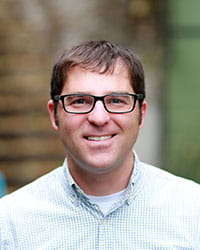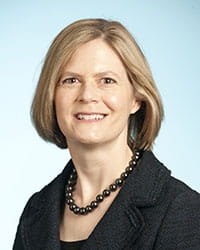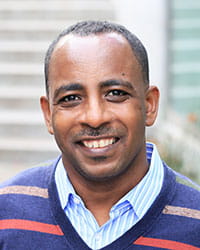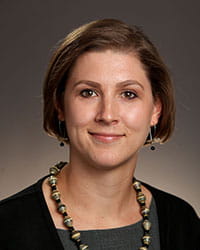Experts at Cincinnati Children’s Dive Deep to Make Biomedical Research Matter to All
Living and championing diversity, equity and inclusion is fundamental to who we are at Cincinnati Children’s and embedded in every aspect of our work. In fiscal 2022, our commitment to respecting everyone was expressed in numerous tangible ways in our research and discovery efforts.
We are proud to celebrate all the faculty members, lab teams and other staff at Cincinnati Children’s who helped make these achievements in understanding and reducing the impact on children of our society’s health inequities and social determinants of health.
Applying Research Skills to Long-Standing Issues
Reaching beyond the walls of our hospital to address housing concerns is just one of many ways that Cincinnati Children’s devotes its research skills and experience to addressing issues involving systemic racism and social determinants of health. In fiscal 2022, ended June 30, investigators at Cincinnati Children’s produced a wide body of work, including:
Collaboration with Legal Aid Society Helps Families, Attracts Interest from White House
Ever since a 2009 project to push a large landlord in Cincinnati to correct toxic housing conditions that were sending too many children to the hospital with asthma exacerbations, we have known that an ongoing partnership with the Legal Aid Society of Greater Cincinnati was making real improvement in child health outcomes.
In a study published March 7, 2022, in Health Affairs, researchers at Cincinnati Children’s assembled the data to prove it.
By examining thousands of cases involving referrals to our Child HeLP program and comparing them in a novel way to a pool of similar cases that did not involve intervention from the program, a research team led by Andy Beck, MD, MPH, and Rob Kahn, MD, MPH, demonstrated a 38% reduction in the hospitalization rate among kids who got Child Help assistance from 2012 through 2017.
 |
 |
| Andrew Beck, MD, MPH |
Robert Kahn, MD, MPH |
“If this were a pill that demonstrated a 38% reduction across so many kids in terms of hospitalization, every pharmaceutical company in the country would be going after it, and every healthcare payer would be figuring out how to cover it,” says Kahn, who was recently named a vice president at Cincinnati Children’s and director of the new Michael Fisher Child Health Equity Center.
The Health Affairs study has attracted interest from the Social Interventions Research and Evaluation Network (SIREN) in California as well as many of the 450 members of the National Center for Medical-Legal Partnership. Then, in September 2022, Beck was invited to meet with White House officials as art of an event dubbed “Communities in Action: Building a Better Ohio.” Among those attending: HUD Secretary Marcia Fudge.
“I had a conversation with her about how important and influential housing quality is for the health of a child,” Beck said. “I mentioned the medical-legal partnership, and Secretary Fudge suggested that all children should have access to legal representation. I handed Secretary Fudge a copy of our recent Health Affairs study highlighting the benefit of such legal advocacy on health outcomes.”
Neighborhood Poverty, Public Insurance Status Outweigh Race for Risk of Diabetes-Related Hospitalization
Research led by Andrea Maxwell, MD, and Nana-Hawa Yayah Jones, MD, published August 18, 2021, in the Journal of Hospital Medicine, found that children living in high-poverty areas or on public insurance are significantly more likely to be admitted to the hospital for diabetic ketoacidosis (DKA). To understand and respond to these equity gaps, researchers in endocrinology at Cincinnati Children’s are working with patients, community members, case workers, social workers, and diabetes educators.
 |
| Nana-Hawa Yayah Jones, MD |
Driving Real-World Change for Cincinnati Families Experiencing Homelessness
Faculty members Pamela Williams-Arya, MD, and Tanya Froehlich, MD, MS, used a focus group methodology called Group-Level Assessment (GLA) to gather perspectives from 53 parents who were living in Cincinnati homeless shelters. Recommendations from the project led to a number of policy and practice enhancements in these shelters, and a paper published in Family & Community Health.
 |
 |
| Pamela Williams-Arya, MD | Tanya Froehlich, MD, MS |
Systemic Racism Explains Most Differences in Asthma Re-Admission Rates
Research led by Tesfaye Mersha, PhD, and Robert Kahn, MD, MPH, published online July 1, 2021, in the Journal of Allergy and Clinical Immunology, reports that differences between Black and White children in asthma-related hospital readmissions is more about structural racism built into the health system than it is about genetic differences.
 |
| Tesfaye Mersha, PhD |
New Technology to Improve Well-Being of Kids in Foster Care
Nearly 500,000 U.S. children are in foster care. Too often, their health records get lost in a maze of storage systems. Now improved data sharing is possible thanks to the IDENTITY software system developed by Sarah Beal, PhD, Judith Dexheimer, PhD, and Mary Greiner, MD, MS. In September 2021, Cordata Healthcare Innovations licensed the technology to expand its use.
 |
 |
 |
| Sarah Beal, PhD | Judith Dexheimer, PhD | Mary Greiner, MD, MS |
Socioeconomic Factors Tied to Childhood Asthma Incidence
Data from a long-running birth cohort study shows that children from poorer or more densely populated neighborhoods were more likely to develop asthma, as were Black and Hispanic children—even in more affluent neighborhoods —compared to White children. The study, led by Antonella Zanobetti, PhD, Harvard T.H Chan School of Public Health, Department of Environmental Health, and by Patrick Ryan, PhD, MS, Cincinnati Children’s, was published online May 23, 2022, in JAMA Pediatrics. Patrick Ryan, PhD, MS, also will provide scientific support for an air monitoring program in Lower Price Hill, recently funded through a $75,000 grant from the EPA to Groundwork Ohio River Valley. Compared to the rest of Cincinnati, residents of Lower Price Hill suffer from disproportionately higher rates of cancer and asthma, upper respiratory ailments, seizures, learning disabilities, lead poisoning, and other health outcomes.
 |
| Patrick Ryan, PhD, MS |
Providing Thought Leadership to Reduce Health Inequities
Research leaders here are working to assure that the groundbreaking science happening every day at Cincinnati Children’s serves to help all children thrive. Here's how we are demonstrating that commitment.
Coalition for Pediatric Medical Research Lays Out Priorities
Research Foundation Director Tina Cheng, MD, MPH, and diversity liason Conrad Cole, MD, MPH, led a national policy-setting convening in May 2022 in Washington, DC, to encourage diversity in pediatric research. The coalition’s recommendations include:
- Support and expand the Pediatricians Accelerate Childhood Therapies (PACT) Act of 2021
- Support loan repayment for child and adolescent health researchers
- Fund a cross-institutional cohort for child and adolescent health researchers from underrepresented groups
- Invest substantially in career pathways for diverse child and adolescent health researchers
“There is great momentum to make change,” Cheng says. “The convening and activity around the policy brief led to an action plan related to legislative priorities. We welcome your participation.”
 |
 |
| Tina Cheng, MD, MPH |
Conrad Cole, MD, MPH |
Michael Fisher's Parting Gift
Cincinnati Children’s selected Robert Kahn, MD, MPH, to oversee the new Michael Fisher Child Health Equity Center, which was established to address social, environmental and health care factors that influence child health so that all kids can reach their full potential and thrive. The goal: To eliminate disparities by race and ensure that a child's ZIP code is no longer a predictor for health outcome.
“This is an honor I will cherish for the rest of my life,” Fisher says. “I love Cincinnati Children’s, I love this community, and I love all kids. I am forever grateful to the enormously talented and passionate employees who are devoting their lives and careers to education, research, clinical care, and working with families to help every child pursue their potential.”
 |
| Michael Fisher |
With Care, Medicine's Brave New World Can Be Bright
“We as scientists, clinicians, and socially conscious individuals, we know that advancing technology comes with increased responsibility. No longer can scientists and physicians just do their science without considering the social implications of their work,” says National Academy of Medicine President Victor Dzau, MD. The need to guide the dissemination of discovery so that all people share in the benefits, not just the rich, was the central theme when Dzau spoke to a virtual audience Aug. 18, 2021, as part the Cincinnati Children’s Research Foundation’s “Envisioning Our Future For Children” speaker series.
“You in Cincinnati, you are an anchor institution in your community. You hire people. You provide research. You provide care. You provide resources,” Dzau says. “And you need to think as a leader in society about ethical and social issues.”



